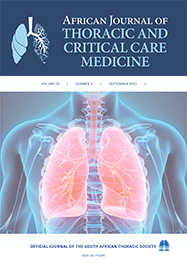Reviews

Endoscopic lung volume reduction with coils
Abstract
The use of endoscopic lung volume reduction (ELVR) as a minimally invasive procedure with significantly lower morbidity and mortality than surgery, is fast becoming a new treatment modality for a select group of patients with severe emphysema. Lung volume reduction can be achieved either by surgery (LVRS) or the use of endoscopic techniques. Although LVRS offers survival benefit and increased exercise capacity in selected patients, this comes at a price with significant associated morbidity and mortality. The use of endoscopic lung volume reduction (ELVR) aims to reduce the risks and costs of surgery with comparable physiological benefits. Current evidence suggests that not all classes and phenotypes of emphysema will benefit from lung volume reduction, and that individual techniques may benefit different subgroups of patients. It therefore remains paramount that a systematic approach is followed and selection criteria are met, given the high costs and potential complications related to both LVRS and ELVR
Author's affiliations
M J Vorster, Division of Pulmonology, Department of Medicine, Stellenbosch University and Tygerberg Academic Hospital, Cape Town, South Africa
Full Text:
Cite this article
Article History
Date published: 2015-10-21
Article Views
Full text views: 935
Refbacks
- There are currently no refbacks.
African Journal of Thoracic and Critical Care Medicine| Online ISSN: 2617-0205
This journal is protected by a Creative Commons Attribution - NonCommercial Works License (CC BY-NC 4.0) | Read our privacy policy.
Our Journals: South African Medical Journal | African Journal of Health Professions Education | South African Journal of Bioethics and Law | South African Journal of Child Health | Southern African Journal of Critical Care | African Journal of Thoracic and Critical Care Medicine| South African Journal of Obstetrics and Gynaecology |



.jpg)